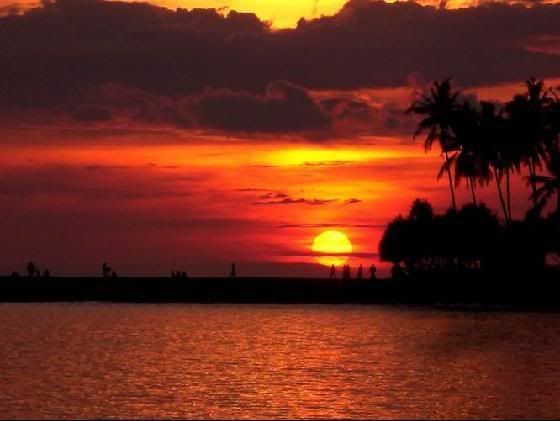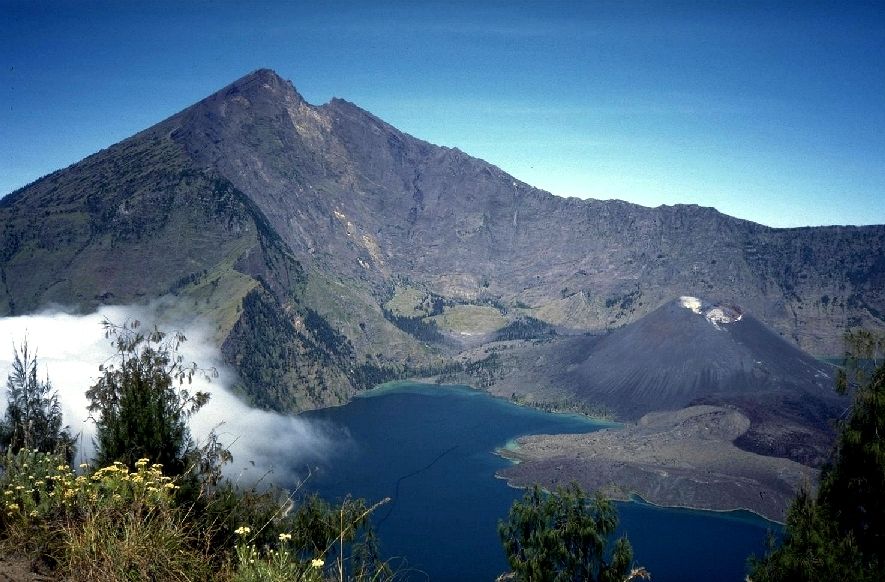 Acctually lombok has a lot of beautifull places, unfortunately they less develop and promote than Bali. Tourism is still low key, and many visitors are independent travellers drawn by the island’s intoxicating diving and snorkelling, hiking and surf spots, as well as Lombok’s intriguing endemic culture.
Acctually lombok has a lot of beautifull places, unfortunately they less develop and promote than Bali. Tourism is still low key, and many visitors are independent travellers drawn by the island’s intoxicating diving and snorkelling, hiking and surf spots, as well as Lombok’s intriguing endemic culture.Lombok (population 2,950,105 in 2005) is an island in West Nusa Tenggara province, Indonesia. It is part of the chain of the Lesser Sunda Islands, with the Lombok Strait separating it from Bali to the west and the Alas Strait between it and Sumbawa to the east. It is roughly circular, with a “tail” to the southwest, about 70 km across and a total area of about 4,725 km? (1,825 sq mi). The administrative capital and largest city on the island is Mataram.
The wide area of West Nusa Tenggara it self is 49.32,19 Km2 that contains of 20.153,07 Km2 land and 29.159,04 Km2 of sea. The big islands beside Lombok island is Sumbawa Island with 15.414,37 Km’ (76,49%) wide area. Beside that, it also surrounded by thousands small islands, such as Gili Air, Gili Meno, Gili Trawangan, Gili Gede, Gili Nanggu, Gili Tangkong, Moyo Island, Bungin Island, Satonda Island, Kaung Island, and Panjang Island.
Geography and demographicsThe island’s topography is dominated by the centrally-located stratovolcano Mount Rinjani, which rises to 3,726 m (12,224 ft), making it the third-highest in Indonesia. The most recent eruption of Rinjani was in June-July, 1994. The volcano, and its sacred crater lake, Lake Segara Anak, are protected by a National Park established in 1997. The southern part of the island is a fertile plain where corn, rice, coffee, tobacco, and cotton are grown.
The island’s inhabitants are 85% Sasak (a people, closely related to the Balinese, but mostly practising Islam), 10-15% Balinese, with the small remainder being Chinese, Arab, Javanese, and Sumbawanese.
List of Beautifull Places in West Nusa Tenggara :
1. Taman Mayura Temple . At the township of Cakranegara, adjoining the capital Mataram, explore the remains of the Water Palace built in 1744 to serve the Balinese court. The royal complex is set in parklands with an avenue of mangosteen trees leading to old Dutch cannons. These fascinating ruins include a floating meeting hall which served as a court of justice.

2. Sengiggi . Sengiggi is the main town on Lombok. There are lots of restaurants and internet cafes, a small store and a lovely beach. you can book all your tours to surrounding areas through Perama in the village. The sasak architecture (see the pitch of the roofs) is unique to Lombok.
3. Mount Rinjani . Tetebatu is a village at the foot of Gunung Rinjani, the highest volcano on Lombok (and in Indonesia I think). It is rare to see the top of it as it is usually cloaked in mist / cloud.

4. Gili Trawangan. This Island is also known as “Party Island”, where mostly young European found them “Lost In Paradise”. With spectacular sunrises over Lombok’s Mount Rinjani volcano and breathtaking sunsets that illuminate Bali’s towering Mount Agung volcano, together with warm hospitality of Gili Trawangan residents, it’s not surprising that most visitors end up staying longer than originally plan.
5. Agung Gunung Sari Temple. This great temple on a hill at Gunung Sari, about four kilometers from Mataram, was witness to the Puputan battle to the last man, fought on November 22, 1894, between Lombok’s last Balinese ruler, Anak Agung Nengah and followers, and the Dutch troops under General Van der Vetter’s command.

6. Lingsar Purse. The only Hindu shrine in the world where both Hindus and Moslems come to worship. About 7 kilometers west of Narmada, it was built in 1714 and rebuilt in 1878 to symbolize harmony and unity between the Hindu Balinese and Moslem Sasak population of the area, especially those who adhere to Lombok’s unique Wektu Telu school of Islam. The Balinese temple is built on higher ground, behind the Moslem section in the compound. In the lower yard is a spring in which pilgrims in the temple yard stage a mock battle between Hindus and Moslems, in which both parties hurl rice cakes at each other.
No comments:
Post a Comment